Biomes are very large ecological areas. Each biome is defined by its climate, vegetation, wildlife, and geology. There are five types of biomes on Earth: tundra, desert, grassland, aquatic, and forest.
All types of biomes are found in North America. Each biome is made up of a large number of ecosystems with common characteristics.
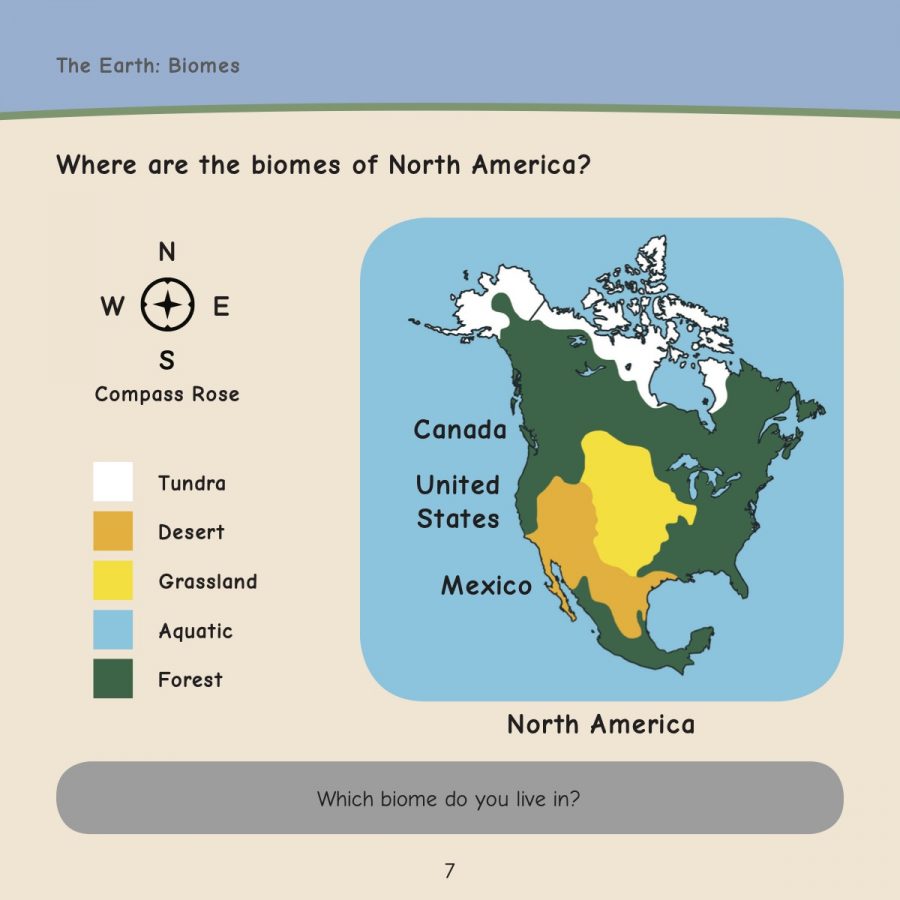
From The Earth, Our Home, a title in the We Are All Connected Series from Strong Nations Publishing (Credit: Strong Nations Publishing)
GRASSLAND BIOMES
Grasslands are large, semi-arid, open areas of land. Grasses and wildflowers are the main plants that grow there. Grasslands are not all the same. Each supports the plants and animals that have best adapted to the unique range of temperatures and precipitation at that location.
Grasslands are important because they provide habitats for a wide variety of plants, insects, mammals, birds, and reptiles. Migrating birds often stop there to rest and feed during their long flights. Grasslands are the least protected and most endangered biomes on the planet. In Canada, most of the natural grasslands have been converted to farming and grazing purposes, leaving less than 25% of our natural grasslands intact. The following resources provide information about this rapidly shrinking biome.
Grassland Video Documentaries
 Grasslands: A Hidden Wilderness
Grasslands: A Hidden Wilderness
(Running Time: 44:08)
This documentary first aired on the CBC program The Nature of Things on September 27, 2019. It focusses on the connections between human culture and the communities of plants and animals that live on the remaining pieces of natural Canadian prairie. It is available to view online at gem.cbc.ca.
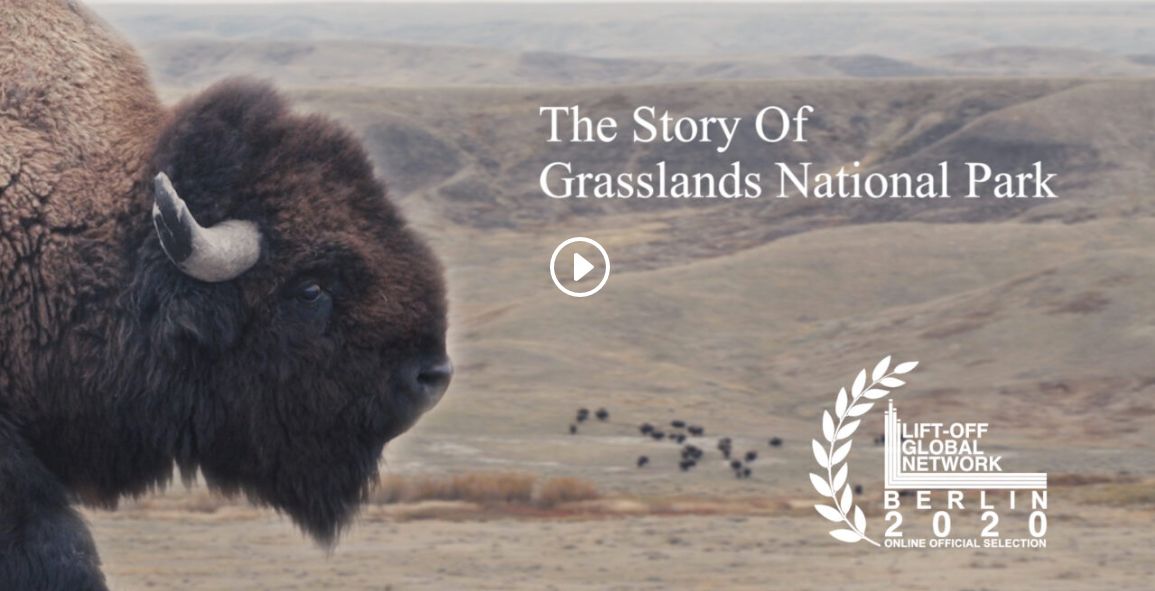 The Story of Grasslands National Park
The Story of Grasslands National Park
(Running Time: 28:46)
When you go to the Tourism Swift Current website you will be able to access a video documentary that explains the history of the park and some of the conservation efforts that are being taken there. Bison and burrowing owls are just two of the endangered species that live within the borders of the park.
Grassland Books (Fiction and Non-Fiction)
The following books would support the planning of a literature-based grasslands theme and would also make great additions to a classroom library. Most of the titles connect directly to the Earth Science and Social Studies curricula and some contain authentic Indigenous cultural content.
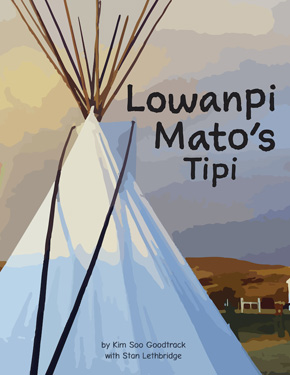 Lowanpi Mato’s Tipi
Lowanpi Mato’s Tipi
Strong Nations Publishing
ISBN 9781771744751
As Lowanpi Mato takes us through the step-by-step process of setting up a summer tipi, he shares the Lakota life values and traditions that are connected to the building and maintaining of the tipi. The Lakota language is woven throughout the book. A counting chart from 1 to 20 in the Lakota language is included, as well as a search and find counting game.
 Métis Camp Circle
Métis Camp Circle
A Bison Culture Way of Life
written and illustrated by Leah Marie Dorion
Michif translation by Norman Fleury
Gabriel Dumont Institute Press
ISBN 97811926795959
This beautifully illustrated picture book takes the reader back to a time when bison provided the foundation for the social, economic, and political life of the Métis people. Written in English and Michif, this book weaves cultural teachings and details of the daily life of these people throughout the text. The back end of the book includes information on the following: Bison as a Food Source, Organizing the Bison Hunt, Bison Artefacts and Pemmican. A CD with an English and Michif translation is included.
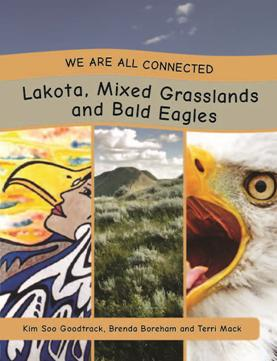 We Are All Connected
We Are All Connected
Lakota, Mixed Grasslands and Bald Eagles
Strong Nations Publishing
ISBN 978-1-77174-247-4
This book describes and explores a grassland ecosystem with a focus on the bald eagle as one animal that has adapted to living there. Kim Soo Goodtrack, who lives in the Wood Mountain area of southern Saskatchewan, responds to strategic questions as to how her community interacts with the ecosystem. Her responses include samples of her artwork and stories as well as descriptions of plants and animals of that region, the government structure within her territory and some ways that her community is keeping the Lakota language alive. This well-illustrated non-fiction title is filled with text features such as maps, charts, diagrams, captions, labels, word boxes, fact boxes, and bold words.
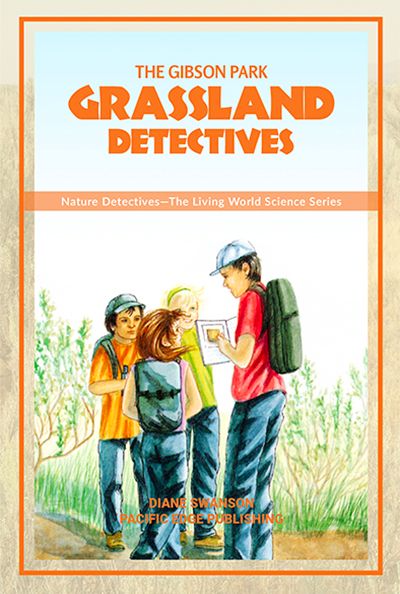 The Gibson Park Grassland Detectives
The Gibson Park Grassland Detectives
by Diane Swanson
Pacific Edge Publishing
ISBN 1-895110-41-63
This book follows a group of young nature detectives as they explore a grassland ecosystem. Written by award-winning author Diane Swanson, this book provides teachers with a literature-based resource that extends across the curriculum (Science, Social Studies and Language Arts). Well illustrated and filled with supportive text features, this book is accessible to readers from grades three to six.
Note: This book is accompanied by a comprehensive teacher’s guide that provides resources that address the Science, Social Studies and Language Arts curricula. Available from pacificedgepublishing.com.
These additional titles would bring some historical perspective from a settler point of view to a grassland theme study.
Belle’s Journey by Marilynn Reynolds (Orca Book Publishers)
The Auction by Jan Andrews (Groundwood)
The Prairie Fire by Marilynn Reynolds (out of print but may be in your school library)
Tess by Hazel Hutchins (Annick Press)
Under a Prairie Sky by Anne Laurel Carter, Alan and Lea Daniel (Orca Book Publishers)
The Divide by Michael Bedard (Tundra Books)
A Grassland Field Trip Activity
Note: This activity is taken from the teacher’s guide for The Gibson Park Grassland Detectives. This activity is accessible to both rural and urban students.
Goal: To establish how shrubs and grasses are alike and different.
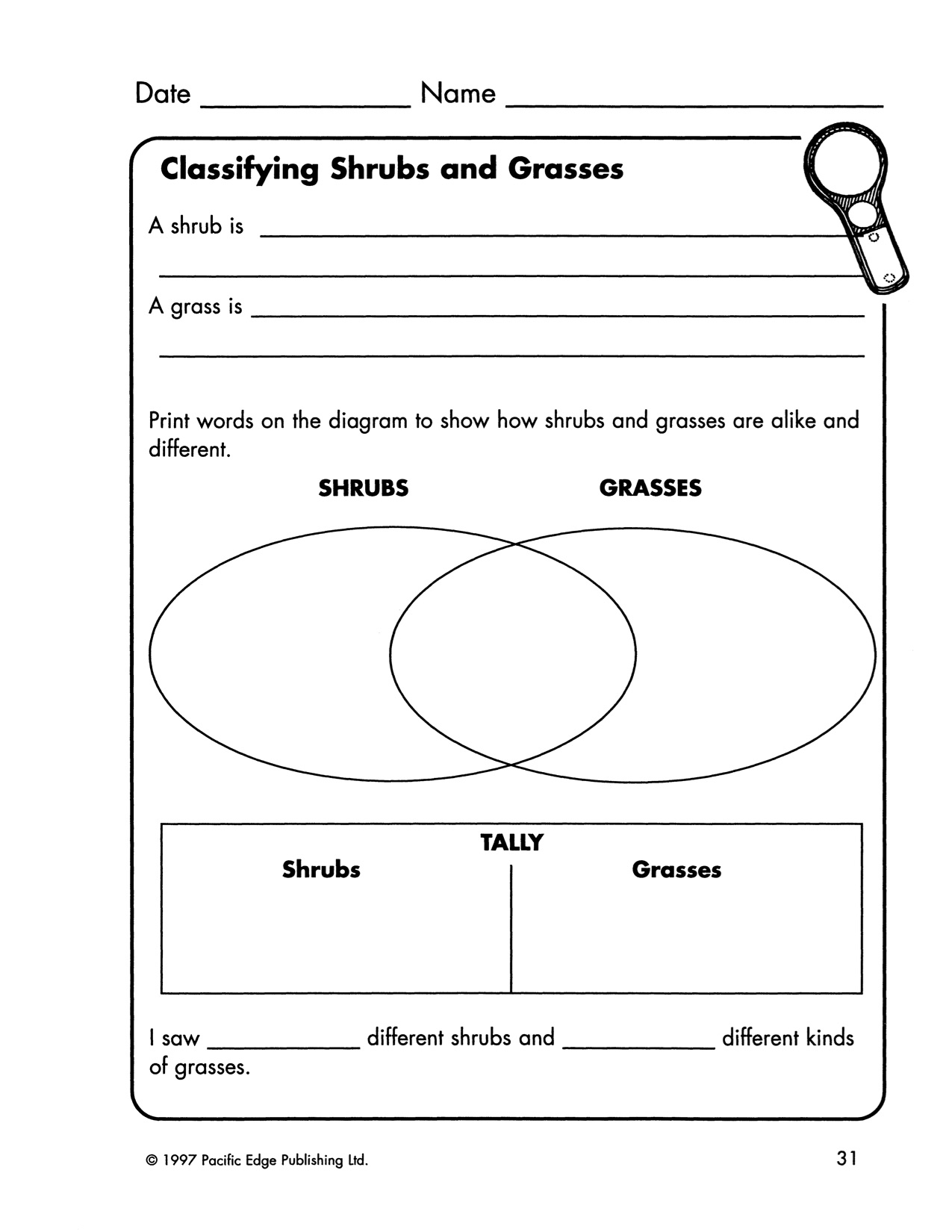 Materials
Materials
• pictures of shrubs and grasses
• 1 copy of the thinking sheet “Classifying Shrubs and Grasses” per student
• 1 clipboard per student
Step 1: Show the students pictures of various shrubs and grasses in reference books or gardening magazines. Discuss how shrubs and grasses are different from trees.
Step 2: Teach the terms:
shrub: A shrub is a low woody plant with several stems.
grass: Grass is a plant with long narrow leaves, jointed stems, and spikes of wind-pollinated flowers. Grasses grow in meadows, fields, pastures, and lawns. Wheat, corn, sugar cane, and bamboo are grasses.
Step 3: Discuss how shrubs and grasses are alike and different. Guide the students to define “shrub” and “grass” and to record words and phrases on the Venn diagram on the thinking sheet.
Step 4: Provide each student with a clipboard. Take a walk around the playground or neighbourhood to look for shrubs and grasses. Have each student make a tally of the number of shrubs and grasses that you see. Record the information at the bottom of the thinking sheet.
ABOUT THE AUTHOR
Brenda Boreham
Brenda has 35 years of classroom experience. She has presented workshops on literacy strategies, and has written a number of resources for teachers. She remains passionate about matching up kids with books.
This article appears in Canadian Teacher Magazine’s Fall 2020 issue.












